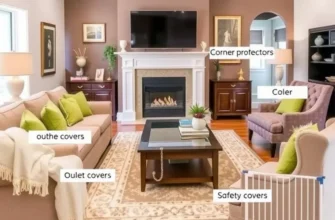Searching for an apartment that accommodates your pets while ensuring a safe and comfortable environment for your family can be daunting. As families, couples, and pet owners know, finding the perfect rental is crucial, not just for you, but for your cherished animals as well. The good news is that more landlords are recognizing the importance of welcoming pets. However, negotiating pet-friendly terms can be tricky. In this guide, we explore the best strategies to make your case effectively. From preparing a solid pet resume to understanding tenant rights, this article aims to equip you with the steps necessary to secure that perfect pet-friendly apartment. So, whether you have a lovable dog, sassy cat, or even a parakeet, let’s dive into how you can negotiate successfully for a home where all family members—furry or human—feel welcome.
Crafting the Perfect Pet Resume

Creating a pet resume can significantly enhance your chances of landing a desirable rental. Start by outlining your pet’s behavior, touching briefly on any routines or habits that demonstrate a calm demeanor. This provides landlords with an upfront understanding of the kind of tenant your pet is likely to be.
Once you’ve covered behavior, dive into your pet’s training history. Highlight any obedience training courses your pet has completed. If your pet has received special certifications or licenses, such as therapy or service animal accreditations, be sure to include these details. Such qualifications can significantly increase a landlord’s confidence in welcoming pets into their property.
One of the most impactful additions to your pet resume will be personal endorsements. Positive references from previous landlords or neighbors who can vouch for your pet’s exemplary behavior will add outstanding credibility. When contacting previous landlords, ask them to mention specific details, like how your pet interacted with other tenants or any incidents (or lack thereof) during your lease term.
Choose positive and engaging language to describe your pet. Instead of saying “barks occasionally,” try “my pet is alert and an excellent companion for security.” Highlighting your commitment to responsible pet ownership will assure landlords of your dedication to maintaining the apartment’s condition. Stress how you manage cleaning and potential wear and tear related to having a pet.
Moreover, emphasizing your family dynamics can also favor your application. If your stable living situation demonstrates a harmonious environment for both family members and pets, landlords will see you as a reliable tenant. Such information showcases a level of responsibility that is attractive to those managing rental properties.
In addition, explore apartment pet-proofing techniques to further reinforce your commitment to a damage-free living experience. Including a mention of how you pet-proof your home can drive home the point that you take every step necessary to ensure your apartment remains pristine.
Finally, remember that the overall presentation of your pet resume matters. A well-organized document with attention to detail reflects how you handle other matters, suggesting you’ll also be a meticulous tenant. Attention to formatting, grammar, and clarity can make these details stand out, nudging landlords towards seeing you as an ideal candidate. The inclusion of professional-looking photos of your pet, capturing them during training or simply basking quietly at home, can add a warm touch to your application.
Crafting a comprehensive pet resume isn’t just about securing a rental; it’s about building a narrative that underscores your family’s dedication to harmonious living alongside a beloved furry friend.
Effective Communication with Landlords

Approaching a landlord about living with your pet requires a balance of transparency and respect. Begin by scheduling a meeting to discuss your interest in the apartment. This indicates you are serious and respectful of the landlord’s time. Face-to-face interactions allow you to convey sincerity and establish trust from the start.
When discussing your pet, bring along a ‘pet resume.’ This can include your pet’s photo, breed information, vaccination records, and references from previous landlords or neighbors. These documents demonstrate that you are a responsible pet owner and can ease concerns the landlord might have about potential damage or disturbances.
Pet policies are often negotiable if approached correctly. Be open about these policies and inquire about specific rules. For instance, some landlords might have weight or breed restrictions. Express your family unit’s maturity and reliability, reassuring the landlord that your pet will not be a problem. If possible, offer evidence of training or a well-behaved nature. This shows you are proactive and committed to maintaining the property.
Landlords often appreciate tenants willing to offer financial guarantees for potential issues. Discuss the possibility of a reasonable pet deposit or an additional monthly fee. Propose an amount you find fair, ensuring it aligns with common market practices. This approach demonstrates your understanding of their concerns and your willingness to contribute to a mutually beneficial solution.
Flexibility with pet restrictions can help secure the apartment. Suggest a trial period, giving both you and the landlord a chance to see how your pet adapts to the environment. During this time, maintain open communication to address any concerns promptly. If the trial period addresses their worries, it sets a positive tone for the long-term relationship.
Apart from these tips, consider discussing additional ways you might contribute to the community or the apartment’s maintenance. This could involve participating in community apartment initiatives or helping to keep common areas tidy. Such contributions can weigh in your favor during negotiations.
Lastly, remember that patience and courtesy are essential throughout the process. If a landlord initially hesitates, provide them time to consider your proposal. Following up with a polite thank you or reminder, if appropriate, shows persistence while respecting their decision-making process.
When equipped with a well-prepared strategy and a respectful attitude, negotiating pet-friendly lease terms becomes more attainable. For further insights on negotiating lease terms as a whole, check out this related resource.
Final words
Finding a suitable apartment that allows pets doesn’t have to be a stressful endeavor. By crafting a well-prepared pet resume and honing your communication skills with potential landlords, you can significantly enhance your chances of finding a perfect home for your family and furry friends. Remember, a positive approach combined with a willingness to negotiate can lead to successful outcomes in your search for a child- and pet-friendly apartment. Stay persistent, be prepared, and maintain open lines of communication – you’ll be living harmoniously in no time.









